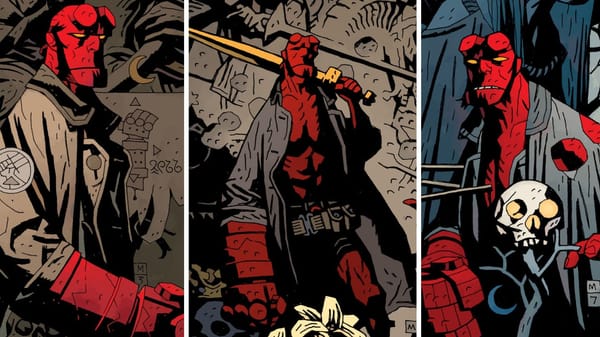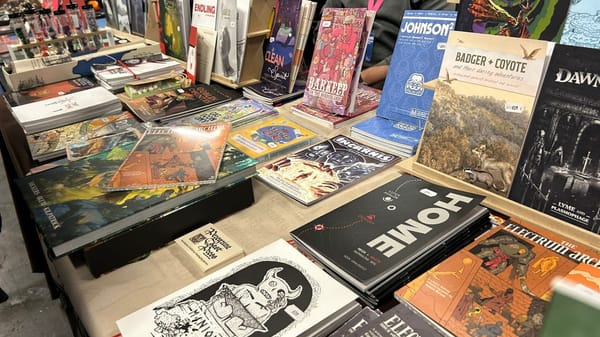EXCLUSIVE: DIE returns to the table with Loaded comic run and RPG quickstart
Another roll of the bones.
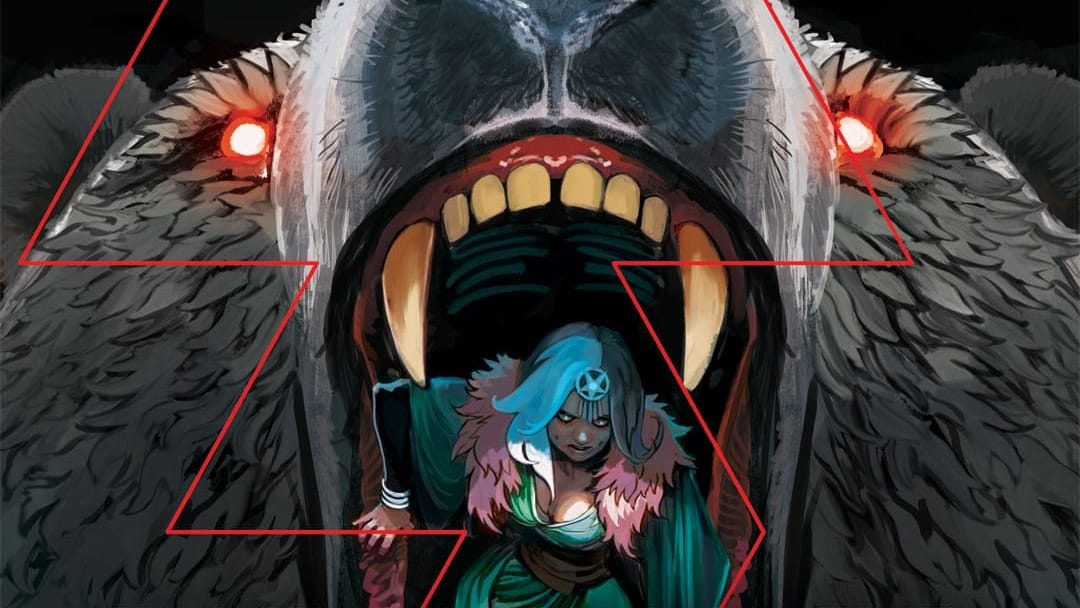
Comic book power duo Kieron Gillen and Stephanie Hans are returning to their horrific fantasy world for a sequel comic titled DIE: Loaded. Set one year after the harrowing events of the original story, DIE: Loaded focuses once more on the players who escaped DIE (the world) and are desperately attempting (again) to lead normal lives back on Earth. It’s… not going so hot. The first issue will be available at comic shops and online retailers on Wednesday, November 12. A tagline provided by publisher Image Comics establishes an ominous tone:
“They’ve finished with the game. But the game isn’t finished with them.”
Accompanying Die: Loaded #1 will be a refreshed quickstart for the DIE RPG that Gillen and Hans designed in coordination with Rowan, Rook and Decard. The quickstart, first published by RRD back in May, will include pregenerated characters representing the six Paragon classes, truncated rules, and a newly designed multi-session scenario. All of it will be styled and formatted to match the comic’s aesthetic and easily bridge the gap between readers and roleplayers. DIE RPG won an Origin Award in 2023 and allows groups to create their own version of DIE’s icosahedral plane (perhaps foolhardy given how that turned out for the comic’s cast). Just like in the comic, each Paragon uses one of the standard array of dice as they war against their own obsessions, insecurities and dark secrets made deadly manifest. Escape back to boring reality, or stay the “better” version of yourself? And what if your party disagrees?
DIE’s 20-issue run began in 2019 and introduced readers to a “goth Jumanji” reality constructed from the building blocks of both roleplay and fantasy fiction — Ash, Chuck, Isabelle, Angela, and Matt search for wayward friend and one-time game master, Sol, across a world that includes homages to Tolkien, Kriegsspiel, the Brontë siblings’ paracosm, and Call of Cthulhu, among others. It won the British Fantasy Award and was nominated for three Hugo awards off the strength of its respect for (and perhaps fear of) escapism’s potential, combined with Hans’ gorgeous portrayal of both the fantastical and the mundane.
In an email to Rascal, Gillen also alluded to an imminent open license for the DIE RPG, which will allow other designers to create and sell their own supplements, adventures, and even original games using a shared underlying mechanical engine. Check out the covers for DIE: Loaded #1 and the quickstart below (along with a small teaser), followed by an interview with Gillen about another cast of the DIE.
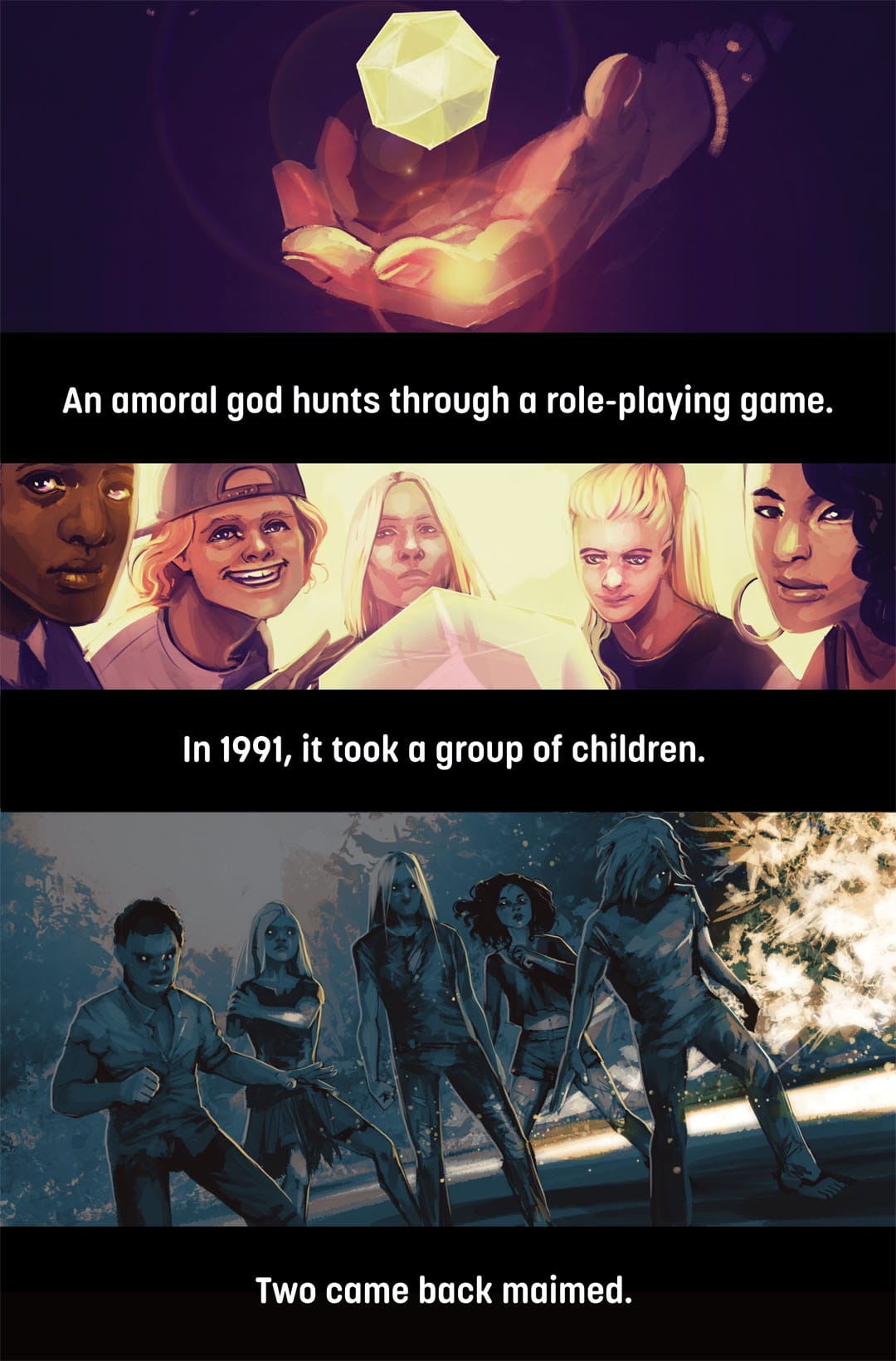
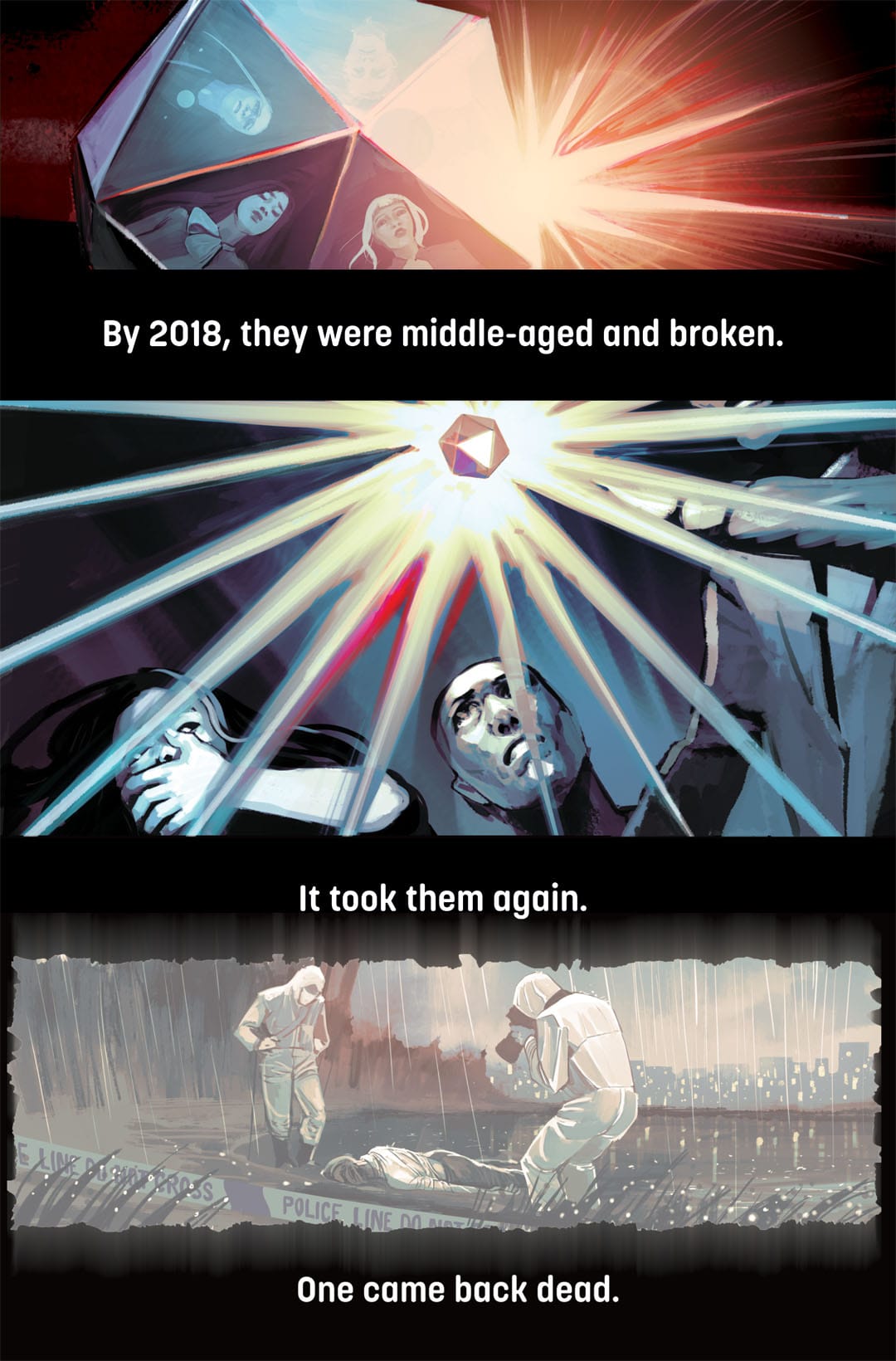
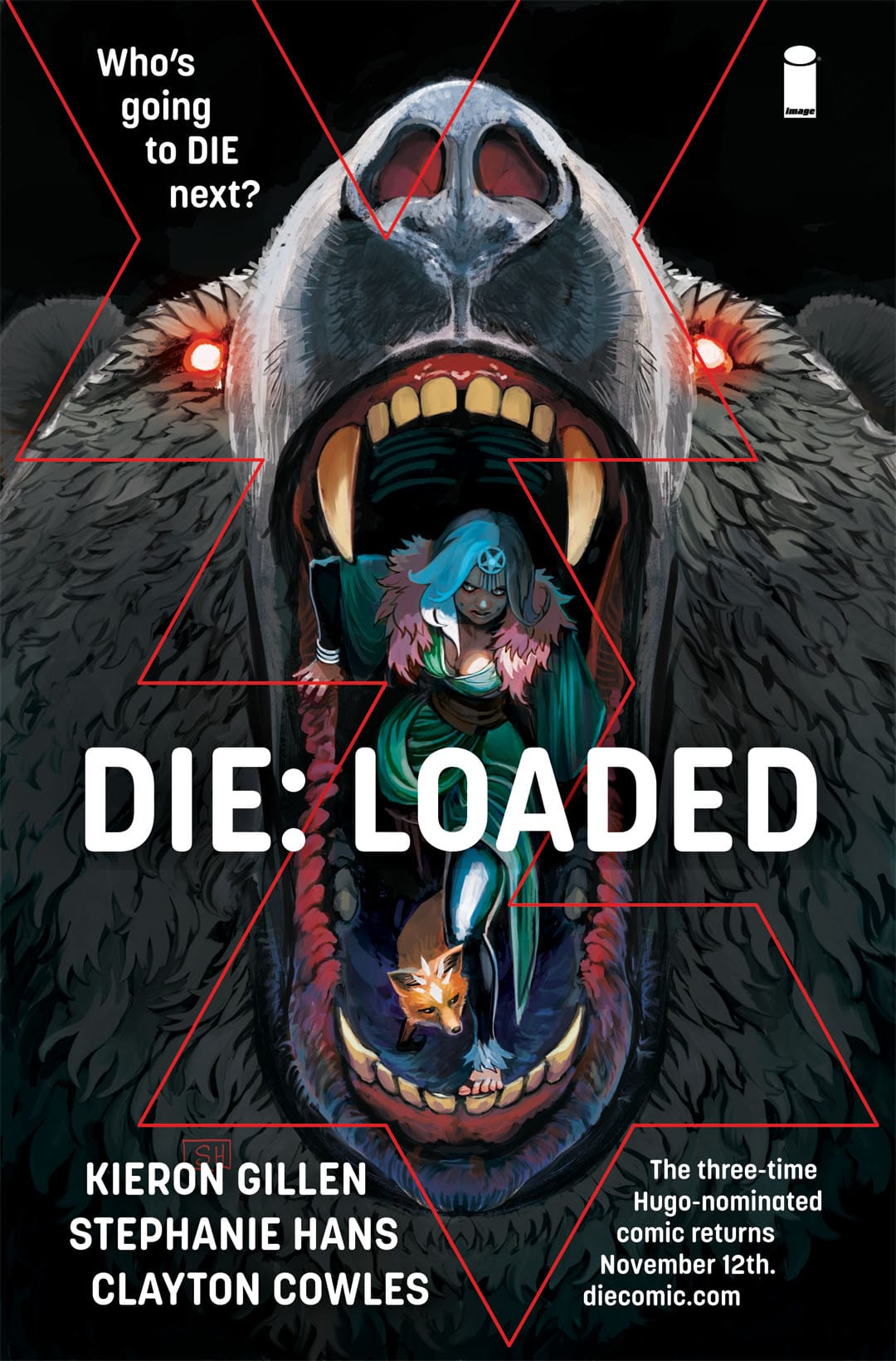
Teaser and cover for DIE: Loaded #1. | Credit: Stephanie Hans / Image Comics
Lin Codega: Why did you decide to work on a sequel for DIE? What was left unsaid from the first series?
Kieron Gillen: Fantasy is infinite. There's no end of things to say.
Yes, that's me throwing my usual gnomic hyperbole around, but that was really what Stephanie and I were trying for. We wanted to make a device to do stories about fantasy (primarily through the medium of games) for as long as we wanted to do it. I sort of pair DIE with Phonogram (Jamie McKelvie and my book on Music) which had a similar remit. As in, let's make a device robust enough to return to as often as we need to.
That's really true in DIE — the main reason I wrote DIE RPG was I wanted to invite as many people inside this concept as we could. That we're doing the DIE quickstart in comic format speaks to that as well. We wanted to have something relatively inexpensive out there when the first issue of DIE: Loaded drops which they can see on the shelves next to the comic, grab, and try out.
There's no end of stories in DIE. And, to lead back to the question, that includes for us. We're not finished with DIE, and DIE isn't finished with us.
Codega: Is this a standalone sequel or a continuation?
Gillen: It's complicated, Lin. In some ways, it's a sequel, picking up a year from the end of the last book... but it's also designed to be consumed by itself. Which is hard to explain specifically without spoiling it. If you look at it at a certain angle, the first DIE was a sequel. It's a sequel to the story when the cast went into DIE in 1991 when they were teens. It's just that we never show that story, and only allude to its effects on the present day. This is that again.
Basically, we want people to be able to jump into this if they haven't read it. We want people to jump in, and then figure may as well go back and grab the first four trades (or the HC collection of the lot). Or we want people who have never heard of it see the hype and think — actually, that sounds neat. I can go and buy it all now? Neato. By choosing the word "neato" I think the person in question is a 1950s 13-year-old. They're going to find this comic very confusing.
But really, if it says #1 on the front and someone can't just grab and read it, something's gone amiss. We tell everything you need to know.
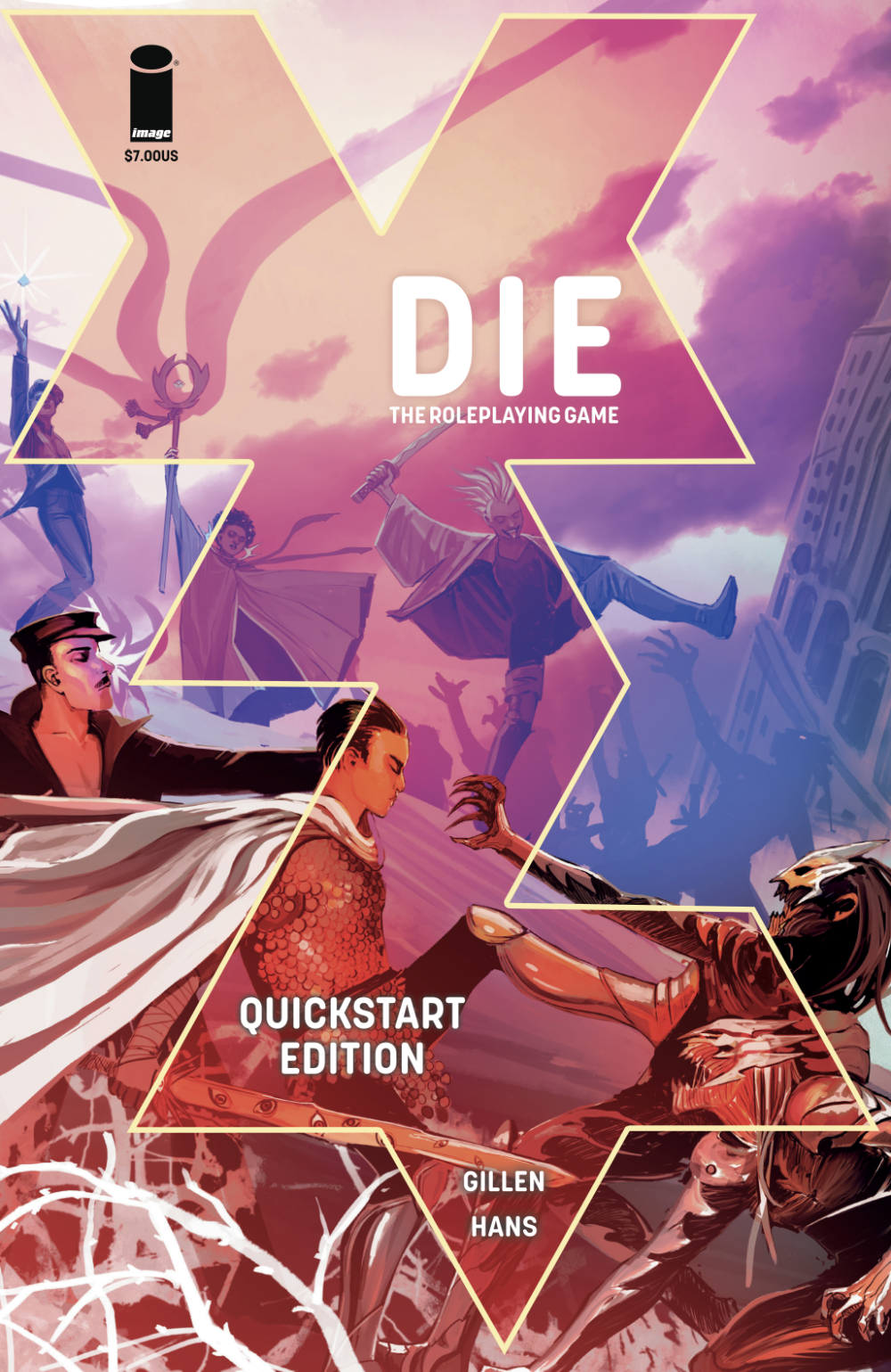
Codega: Satire and poking fun at genre conventions are a huge part of DIE -- what new questions does this sequel ask of tabletop games?
Gillen: Hah. The whole concept is really one of them — the first DIE was "getting to know people better via the medium of games." As in, you play games with friends and see them at a different angle. DIE: Loaded has a completely different group dynamic at its heart.
But the more satirical side is just as fun. At least one reason I finally went to GenCon (the one with the panel you moderated) was I wanted to research and explore the US gaming cons for this - there's some strong con culture satire in here. This series has some more of the gods too - there's two I'm particularly fond of who are basically the bad Good GM and the good Bad GM. One embodies everything we roll eyes at in a GM... and is really a puppydog who really needs a hug. One embodies all the traits we tend to laud in someone running a game... and is just a cold hearted monster using the dogma to crush people. Lots of that kind of stuff. There's a brutal isekai piss take at one point, for example. Our god of death is memorable, I think. There's lots of fun.
There's also the more serious stuff too — the big artistic homages to people we've loved. There's a couple of them specifically. And away from the satire and homage, there's just a lot of big, serious character work. DIE is a lot.
Codega: I loved the one-shots that were included in the first DIE RPG book (as well as the supplemental book of one shots). Are there any plans to bring more of those to print?
Gillen: Well, the Quick Start includes an entire standalone adventure too — it's a 2-3 session game you can just run straight. It's called THE DREAMS WE HAD AS CHILDREN and is very much a different angle on those core DIE themes of what you've let go of as the years have gone by. Also, action set pieces. The whole goth Jumanji thing.
But I'm actually planning on using the monthly comic to get some new game material out into the world — basically, beta material for folks to play with, drawing from material that's in each comic. I know the backbone of them will be doing proper rules and character profiles for the twelve iconic weird-ass gods from the series. Also, whatever else that turns up - what I want to do is an expansion for Rituals that lets you play the game in a very different way. What DIE RPG doesn't do is actually let you do what happened in the first comic - as in, go into DIE, leave, then come back later. I'm trying to see if I can get that working to my satisfaction, and if I can, I'll put it in there.
Take that as an example rather than a specific — basically, I have space at the back of the comic from issue two onwards, and want to use that in as many ways as possible. Releasing some beta material, in the same way as other designers may use a Patreon, is very much the goal. Also, for people reading the comic to be aware that there's a roleplaying game waiting for them they can just try, right? And if not, just that aesthetic thrill of seeing this stuff in rules. There's a wonder to a bestiary or a character sheet, I think.



